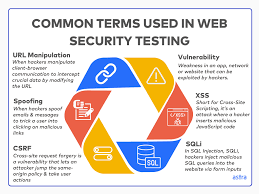In today's digital age, cybersecurity threats are a constant concern for businesses of all sizes. Web security testing is a critical component of a comprehensive security strategy, helping organizations identify and mitigate vulnerabilities before they can be exploited by malicious actors. This white paper explores the importance of web security testing, the types of vulnerabilities to look for, and best practices for implementing a robust security program.
White Paper: Securing Your Digital Assets: A Guide to Web Security Testing for SMBs
Abstract
In today's digital age, cybersecurity threats are a constant concern for businesses of all sizes. Web security testing is a critical component of a comprehensive security strategy, helping organizations identify and mitigate vulnerabilities before they can be exploited by malicious actors. This white paper explores the importance of web security testing, the types of vulnerabilities to look for, and best practices for implementing a robust security program.
Introduction
The increasing reliance on web applications and e-commerce platforms has made web security a top priority for businesses. A successful cyberattack can lead to significant financial losses, reputational damage, and legal liabilities. Web security testing helps organizations identify and address security weaknesses, reducing the risk of data breaches and other cyber threats.
Why Web Security Testing Matters for SMBs
Small and medium-sized businesses (SMBs) are often attractive targets for cybercriminals due to their perceived lack of robust security measures. By investing in web security testing, SMBs can protect their sensitive data, maintain customer trust, and ensure business continuity.
Key Benefits of Web Security Testing
- Identify Vulnerabilities: Discover weaknesses in web applications, networks, and infrastructure.
- Reduce Risk of Breaches: Proactively address vulnerabilities before they can be exploited.
- Protect Sensitive Data: Safeguard customer data, financial information, and intellectual property.
- Maintain Compliance: Ensure compliance with industry regulations and data privacy standards.
- Enhance Brand Reputation: Protect your brand's reputation by preventing data breaches and security incidents.
Types of Web Security Testing
- Vulnerability Scanning: Automated scanning to identify known vulnerabilities.
- Penetration Testing: Simulating real-world attacks to uncover exploitable vulnerabilities.
- Web Application Firewalls (WAF): Protecting web applications from attacks by filtering malicious traffic.
- Security Code Reviews: Analyzing source code for security flaws.
Best Practices for Web Security Testing
- Regular Testing: Conduct regular security assessments to identify and address vulnerabilities.
- Stay Informed: Keep up-to-date with the latest security threats and vulnerabilities.
- Train Employees: Educate employees about security best practices to prevent human error.
- Implement Strong Password Policies: Enforce strong password policies and multi-factor authentication.
- Keep Software Updated: Regularly update software and plugins to address vulnerabilities.
- Monitor Network Traffic: Monitor network traffic for suspicious activity.
- Back Up Data: Regularly back up data to protect against data loss.
- Incident Response Plan: Have a plan in place to respond to security incidents.
Conclusion
Web security testing is an essential component of a comprehensive cybersecurity strategy for SMBs. By investing in regular security assessments and implementing best practices, organizations can significantly reduce the risk of cyberattacks and protect their valuable assets.
References
- Open Web Application Security Project (OWASP): A non-profit organization focused on web application security.
- National Institute of Standards and Technology (NIST): Provides cybersecurity frameworks and guidelines.
- Cybersecurity & Infrastructure Security Agency (CISA): A U.S. government agency that provides cybersecurity information and resources.
- Kali Linux: A popular penetration testing distribution.
- Metasploit: A powerful penetration testing framework.
By prioritizing web security testing, SMBs can safeguard their digital assets and build a strong foundation for long-term success.
